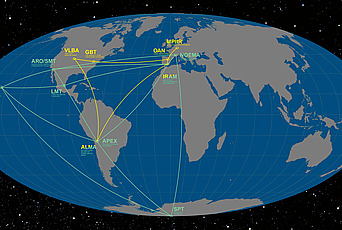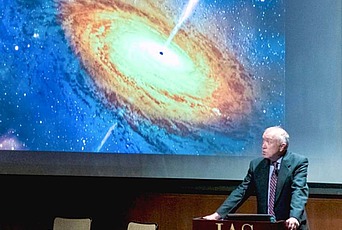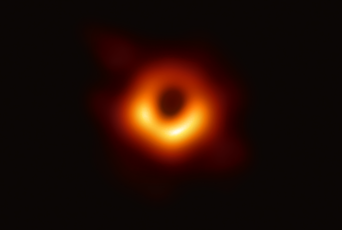
Cool Accretion Disk Detected Around Milky Way’s Supermassive Black Hole
A team of researchers, led by Lena Murchikova, Bezos Member in the School of Natural Sciences, has made new strides in understanding the supermassive black hole at the center of the Milky Way galaxy, Sagittarius A*. The results, to be published in Nature on June 6, reveal a rotating nebulous disk of cool gas within 20,000 event horizons of the black hole. The paper is coauthored by two former IAS Members in Natural Sciences, Sterl Phinney (1994, 92, 83–85) now of Caltech and Roger Blandford (1998, 74–75) now of Stanford, and Anna Pancoast of Harvard.
Using the Atacama Large Millimeter/submillimeter Array (ALMA), the team was able to detect faint radio signals, enabling them to see comparatively cool hydrogen gas at 10,000 degrees Celsius orbiting around the black hole. This is the first time that rotation of the accretion disk has been seen.
“We were able to shed new light on the accretion process around Sagittarius A*, which is a typical example of a class of black holes that have little to eat. The accretion behavior of these black holes is quite complex and, so far, not well understood,” commented Murchikova. “Our result is potentially important not only for our galaxy, but to any galaxy which has this type of underfed black hole in its heart. We hope that this cool disk will help us uncover more secrets of black holes and their behavior.”
Read the paper, “A Cool Accretion Disk Around the Galactic Center Black Hole,” which is currently available online.
Read more about this research from the National Radio Astronomy Observatory, a facility of the National Science Foundation and partner in ALMA construction and operations.


